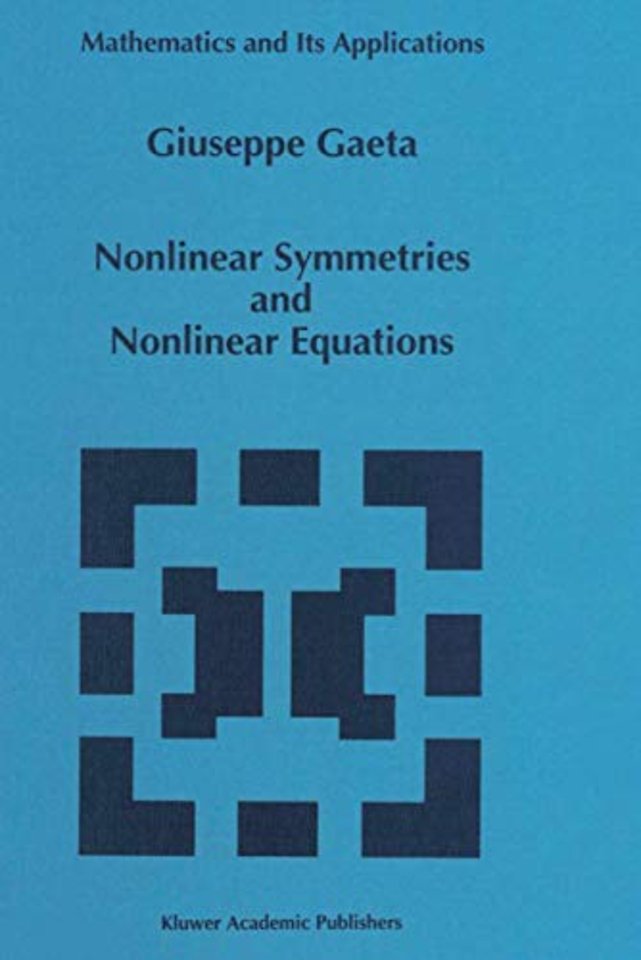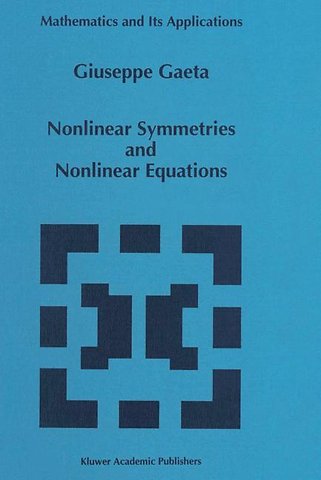Nonlinear Symmetries and Nonlinear Equations
Samenvatting
The study of (nonlinear) dift"erential equations was S. Lie's motivation when he created what is now known as Lie groups and Lie algebras; nevertheless, although Lie group and algebra theory flourished and was applied to a number of dift"erent physical situations -up to the point that a lot, if not most, of current fun damental elementary particles physics is actually (physical interpretation of) group theory -the application of symmetry methods to dift"erential equations remained a sleeping beauty for many, many years. The main reason for this lies probably in a fact that is quite clear to any beginner in the field. Namely, the formidable comple:rity ofthe (algebraic, not numerical!) computations involved in Lie method. I think this does not account completely for this oblivion: in other fields of Physics very hard analytical computations have been worked through; anyway, one easily understands that systems of dOlens of coupled PDEs do not seem very attractive, nor a very practical computational tool.
Specificaties
Inhoudsopgave
Net verschenen
Rubrieken
- aanbestedingsrecht
- aansprakelijkheids- en verzekeringsrecht
- accountancy
- algemeen juridisch
- arbeidsrecht
- bank- en effectenrecht
- bestuursrecht
- bouwrecht
- burgerlijk recht en procesrecht
- europees-internationaal recht
- fiscaal recht
- gezondheidsrecht
- insolventierecht
- intellectuele eigendom en ict-recht
- management
- mens en maatschappij
- milieu- en omgevingsrecht
- notarieel recht
- ondernemingsrecht
- pensioenrecht
- personen- en familierecht
- sociale zekerheidsrecht
- staatsrecht
- strafrecht en criminologie
- vastgoed- en huurrecht
- vreemdelingenrecht

